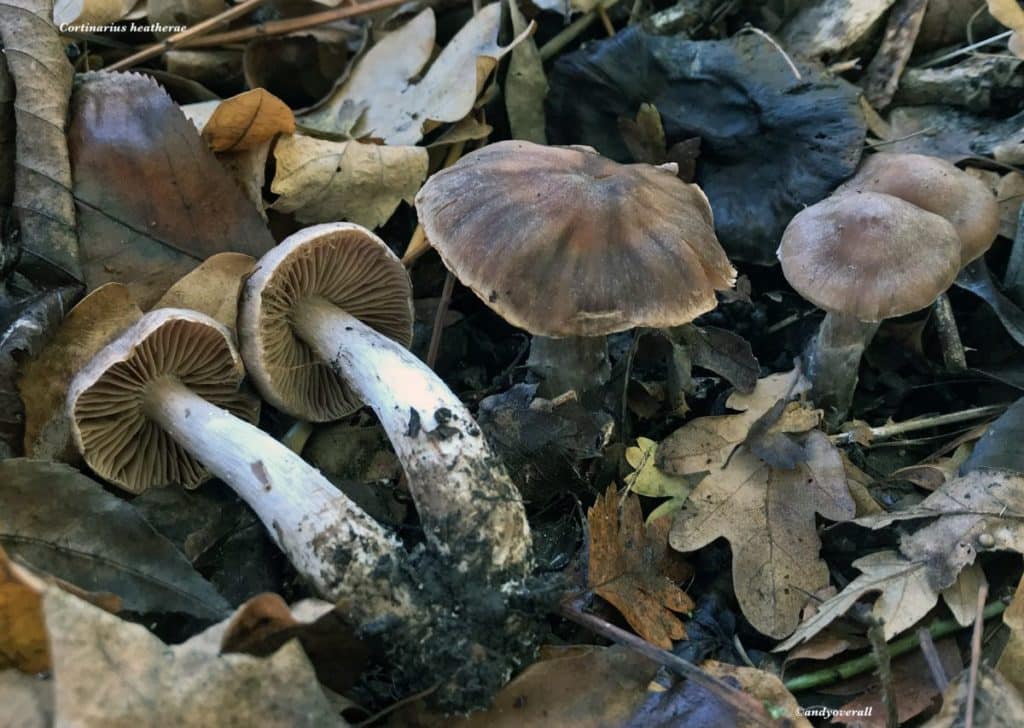By Andy Overall
Andy is the well respected mycologist behind “Fungi to be With” which is dedicated to connecting the Greater London public to the natural environment through the magical world of fungi.

During the autumn of 2018 I was part of an ongoing survey of the larger fungi to be found in various areas surrounding Heathrow airport. Adam Cheeseman, who heads up an onsite biodiversity team, told me that whilst he’d previously seen lots of fungi fruiting they hadn’t since a formal survey began in 2015. However there was finally lots of fungi again. I promptly made my way over to Heathrow.
The area of interest was the Causeway Nature Reserve, a large body of water situated southeast of the airfield, which forms part of Heathrow’s Pollution Control System. It is part of the Eastern Balancing Reservoir, which is surrounded on all sides by sloping banks populated by various trees. And it was the south-facing bank, which was of interest.
This bank had apparently been filled with building rubble, some years back, which had now grown with various trees, namely Quercus robur, Q. ilex and Salix species. This rubble would have undoubtedly leached lime into the soil, creating more calcareous conditions. This was no more demonstrated by the recording of the very rare, Lactarius mairei fungi, which is a species of calcareous woodlands with Quercus. This was to be the first record of this species from Middlesex.
However, one genus in particular seemed to be thriving in this area, that of Cortinarius and to be more specific, the sub genus, Telemonia.
Lots of photographs were taken and collections made of the various Cortinarius species, which were dried, numbered and sent off for DNA analysis in Spain. This provided very interesting sequence results which were then sent onto Kew for further analysis by Kare Litteman, DNA Curator at the time and, to help further, a renowned Cortinarius expert.
A couple of the collection sequences did not match anything in his vast database or that of his colleagues. These collections were therefore deemed new to science! Cortinarius heatherae was born, named after my wife Heather.
Description of the collection
Cortinarius heatherae Overall sp. nov.
Etymology: The species is named after Heather Overall.
Holo typus: A.S.Overall 08.11.2018, K(M)252508 (K).
- Pileus 3–5.7 cm wide, at first convex, later plano-convex with a broad umbo, surface silky whitish fibrillose when young, later more apparent only in the margin, reddish brown, later darkening-blackening in large spots, hygrophanous.
- Lamellae adnate, medium spaced, fairly broad, at first light brown with paler edge, becoming rusty brown to dark brown in maturity.
- Stipe 6.3–8.2 cm long, 0.7–1.5 cm thick, more or less clavate, at first greyish white silky fibrillose, later pale greyish brown. Context: greyish brown, marbled hygrophanous.
- Universal veil cream-coloured, forming scattered patterns on the surface of the stipe. Odour not recorded.
- Basidiospores 9–11 × 5.5–6.5(–7) µm, av.= 10.0 × 6.2 µm, Q=1.5–1.8, Qav.= 1.6, mostly amygdaloid, strongly verrucose, strongly dextrinoid.
- Basidia 33–46 × 7–11 µm, somewhat clavate, with four sterigmata.
- Lamellar trama hyphae smooth.
- Pileipellis: Epicutis pale, consisting of parallel hyphae, 6–8 μm wide, smooth to encrusted with spot-like encrustations. Hypoderm colourless, elements 17–50 × 11–19, smooth.
